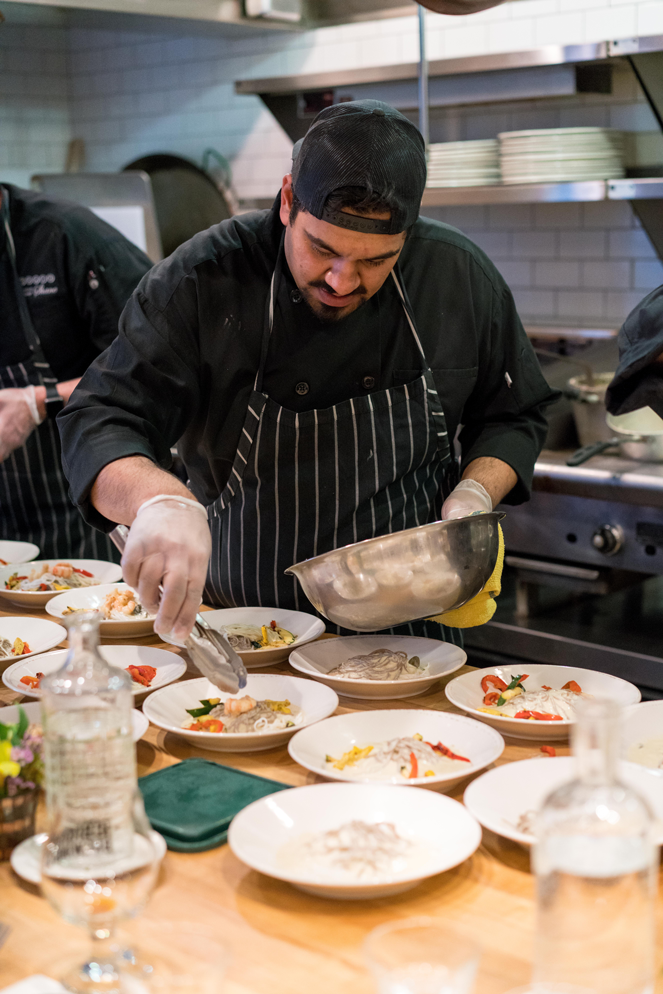Restaurant Profits are the POS (Point of Sales)
Earlier this year, Mark Cuban – the successful entrepreneur, reality TV shark, and owner of a professional sports franchise – invested in Avocaderia – a growing fast casual concept centered around the notoriously price-volatile avocado. So, what does Cuban know about restaurant ownership, restaurant point of sales systems or restaurant profits? I have no idea. But when he offers advice on running a business, people usually listen.
Cuban’s #1 mantra is, “Sales cures all.”
He goes on to say, “There’s never been a company, in the history of companies, that’s ever succeeded without sales.”
It’s a valid point and one that’s hard to argue. More sales, i.e. revenue, typically does solve a lot of problems…unless you’re not earning profits on those sales. If your operating expenses and your cost of goods sold (COGS) exceed the amount of money that you’re bringing in, then *newsflash* – you’re losing money!
What’s the Point of Sales? Profit, of course!
Unfortunately, many restaurant operators discover this rather significant detail – that they’re losing money – after it’s too late. When you’re only focused on generating more revenue and not paying enough attention to your expenses, things can go south pretty quickly.
“If only we can get a few more covers per night, per week, per month, we’ll be fine.”
Don’t get me wrong. Without revenue and getting people walking through those restaurant doors and opening up their wallets, there’s not even a chance for profits. However, focusing only on sales can get you into trouble…especially when your margins are upside-down and your controllable expenses are out of control!
It pays to have a peek at the other side of the balance sheet to see how expenses are impacting profitability. After all, in order to stay in business, your restaurant needs to make money! Just ask Cuban’s colleague, Mr. Wonderful…
3 Rules for Improving Restaurant Profits
There are a lot of ways to improve restaurants profits that we won’t cover in this post. This may include portion control, preventing waste and theft, managing a tighter inventory, how/when to cut staff to control labor costs, etc.
In keeping with Mark Cuban’s “3 Essential Rules” theme in the video above, below are three essential rules for restaurants to improve their profits.
1. Calculate your Restaurant’s Cost of Goods Sold (COGS)
One of the best ways to improve restaurant profits is to intimately understand and control costs. A restaurant’s “prime costs” make up the lion’s share of the total expenses – typically around 60%. Controlling prime costs is critical to protecting your profits.
Prime costs are calculated by combining the sum of all labor costs with the cost of goods sold (COGS). Calculating labor costs is relatively straightforward. Labor costs include all salaries, hourly wages, payroll tax, and benefits.
Prime Cost formula:
Prime Cost = Labor Costs + Cost-of-Goods-Sold (COGS)
Calculating COGS, on the other hand, can be a bit more complicated. In order to accurately calculate COGS, you need to add Beginning Inventory (what you had in inventory at the beginning of the period) plus Purchased Inventory (the items that you purchased during that period) and then subtract Ending Inventory (what you have left at the end of the period).
The result is the the value of what it took to make your sales during that period, or the cost of the goods you sold. This value not only includes what went out on a plate but also includes waste, spoilage, and shrinkage (aka theft).
COGS formula:
Usage = Beginning Inventory + Purchased Inventory – Final Inventory
(Usage/Sales) * 100 = COGS %
Getting to these numbers can be the tricky, or at least time-consuming, part. To accurately account for your Purchased Inventory, you need to capture the line-item information from your invoices. If your bookkeeper or someone on your team is doing this manually, line-by-line, it can take a lot of time. That’s why a lot of restaurants, frankly, don’t do it. Don’t be one of those restaurants.
The good news is that you can get this information without manual data entry. With xtraCHEF, we make it easy to get to these numbers.
By digitizing your invoices, the “Purchased Inventory” element of the equation is already solved. With that data readily available in real-time, you can proactively monitor your costs and not get caught off-guard by fluctuating prices or fudged numbers.
We also make it easy to group items into a Sales or COGS category. This gives you a more granular view of how your COGS are trending. Without category-level insights, you would only observe that food costs are higher without knowing why. Tracking at a category level – along with the ability to drill down into the details – allows you to pinpoint areas for improvement.
With integrations to Point of Sale (POS) systems, like Toast, we’re able to sync sales data to give you COGS ratios across each of these categories.
Knowing your COGS in real-time and knowing where costs are growing out of control allows you to make adjustments. Making adjustments before it’s too late is the difference between profits and losses.
2. Build a Budget
Knowing when to make adjustments relies on having a benchmark of where you need to be. Knowing where you need to be requires having a plan. When it comes to improving restaurant profits, that plan is a budget.
By tracking your COGS and your sales rev


